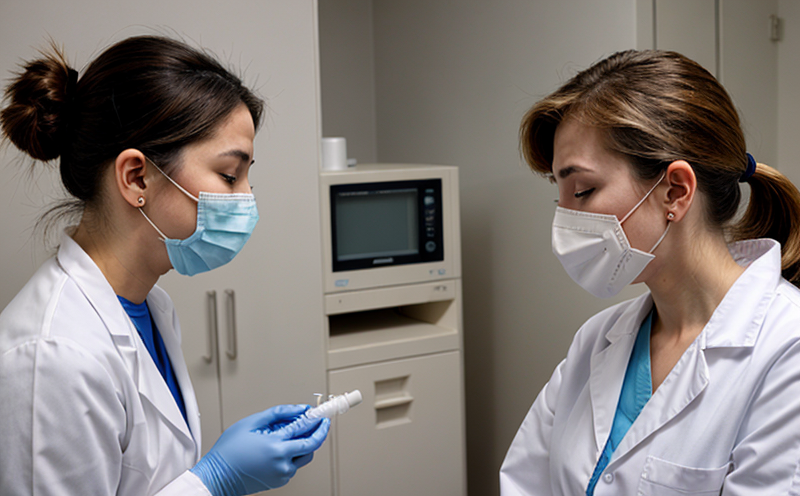Mustard Allergen Testing in Condiments
The demand for allergen-free products has significantly increased over recent years, driven by the growing number of individuals with food allergies. Mustard is a common allergen that can be inadvertently introduced into condiments during processing or packaging. Ensuring the safety and compliance of such products is crucial for both consumer health and regulatory adherence.
At our laboratory, we provide comprehensive testing services to identify and quantify mustard allergens in various condiment samples. Our team specializes in analyzing complex matrices that may contain trace amounts of mustard proteins, which are responsible for triggering allergic reactions. This service helps manufacturers maintain high standards of quality control and ensures compliance with international food safety regulations.
The process begins with the collection of representative samples from production batches or finished goods. These samples undergo rigorous extraction procedures to release any potential allergenic components into a solvable matrix. Subsequently, advanced analytical techniques such as enzyme-linked immunosorbent assays (ELISAs) and liquid chromatography-tandem mass spectrometry (LC-MS/MS) are employed to detect and quantify mustard proteins down to parts per million levels.
Our methodology adheres strictly to relevant international standards including ISO 15216 series, which provide robust guidelines for allergen testing. By following these protocols, we ensure accurate and reliable results that can be used by clients to make informed decisions regarding their product formulations and labeling practices.
The importance of this service extends beyond just identifying the presence or absence of mustard allergens; it also allows companies to implement corrective actions if necessary, thereby preventing recalls and maintaining brand reputation. Additionally, adherence to stringent testing procedures helps businesses comply with legal requirements set forth by regulatory bodies like FSSAI in India or FDA in the United States.
Our experienced scientists work closely with our clients throughout every stage of the process—from sample submission through final report generation. They offer valuable insights into best practices for minimizing cross-contamination risks and optimizing production processes to achieve zero tolerance towards allergens.
Applied Standards
| Standard | Description |
|---|---|
| ISO 15216-1:2014 | Methods for the determination of food allergens in foods—Part 1: Immunochemical methods using immunoassays. |
| ASTM E2387-19 | Standard Practice for Determining the Presence and Quantification of Food Allergens in Foods by Polymerase Chain Reaction (PCR). |
| IUPAC Recommendations on Enzyme Nomenclature | Guidelines used to standardize enzyme names within our analysis. |
The application of these internationally recognized standards ensures that our testing methods are consistent, reproducible, and comparable across different laboratories worldwide. This consistency is vital for maintaining the credibility and reliability of results provided to our clients.
Scope and Methodology
The scope of mustard allergen testing encompasses a wide range of condiments including ketchup, barbecue sauce, hot sauce, mayonnaise, salad dressings, and more. We consider various forms such as liquid, paste, powder, and even semi-solid preparations depending on the nature of the sample.
- Sample Submission: Clients must ensure that they submit sufficient quantities representative of their batch or lot size.
- Extraction Techniques: Depending upon the type of condiment, appropriate solvents are used to extract mustard proteins from the sample matrix. For example, acetonitrile might be utilized for aqueous-based products while methanol could work better for oilier substances.
- Analytical Tools: Multiple analytical approaches are available including ELISA kits targeting key allergenic peptides found in mustard seeds as well as LC-MS/MS capable of identifying molecular signatures specific to these components.
The results obtained from each analysis undergo stringent quality checks before being reported back to the client. These reports include detailed information about detected allergens along with their concentrations, compliance status against relevant legislation, and any recommendations for improvement or corrective action that may be needed.
Competitive Advantage and Market Impact
- Precision: Utilizing state-of-the-art technology allows us to achieve higher precision in our measurements, reducing false positives or negatives.
- Rapid Turnaround Times: Our efficient workflow enables quick turnaround times without compromising on accuracy. This agility is particularly beneficial for time-sensitive projects where prompt decision-making is crucial.
Our services contribute positively to the market by fostering innovation and encouraging safer food production practices. By helping brands meet rigorous standards, we support their efforts in gaining consumer trust and maintaining competitive edge in a crowded marketplace.





